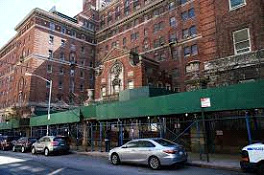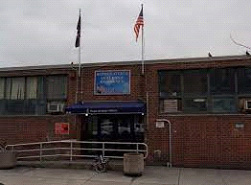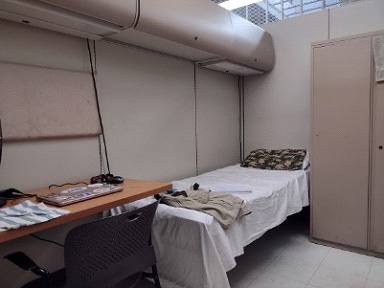Fellow Veterans – To Tell a Story – BE the Story
As part of my participating in the filming of a documentary on vulnerable veterans with Let’s Rethink This founder Jerry Ashton and acclaimed documentarist and filmmaker Patrick de Warren I arrived in NYC in late July from Phoenix, AZ.
 For this documentary to work I actually participated in the process of going ‘homeless’ (which I was) and registered with the New York City Dept of Homeless Services located on 30th St. in Manhattan – just seven blocks from the Manhattan Harbor VA. The men’s shelter is an eight-story former school with classrooms serving as offices and 2–5-man rooms. It was quite an experience.
For this documentary to work I actually participated in the process of going ‘homeless’ (which I was) and registered with the New York City Dept of Homeless Services located on 30th St. in Manhattan – just seven blocks from the Manhattan Harbor VA. The men’s shelter is an eight-story former school with classrooms serving as offices and 2–5-man rooms. It was quite an experience.
Everyone entering the building passes through a metal detector and belongings are thoroughly inspected. There are no weapons allowed or any item that could be used as a weapon. No outside food is allowed, and no food can be removed from the dining area. There is security and staff everywhere.
 Although formidable, the result is a calm, peaceful environment with tons of support from case workers from multiple agencies (including the VA with an onsite veteran’s case manager three days a week). There are laundry facilities, hot meals, showers, and comfy beds. Essentially, it is a steppingstone intake for the hundreds of temporary residents who will be referred to other short-term housing and supportive programs.
Although formidable, the result is a calm, peaceful environment with tons of support from case workers from multiple agencies (including the VA with an onsite veteran’s case manager three days a week). There are laundry facilities, hot meals, showers, and comfy beds. Essentially, it is a steppingstone intake for the hundreds of temporary residents who will be referred to other short-term housing and supportive programs.
What is amazing is that Veterans experiencing homelessness are immediately identified and fast-tracked to a number of transitional programs regardless of military discharge status.
I was transferred to the Borden Avenue Veterans’ Residence in Long Island City in Queens; a large sprawling building with hundreds of beds in open bays and 6 x 9 ft cubicles. Here, the cubicles are provided to veterans that qualify for HUD/VASH and all the veterans are provided a safe haven with meals, showers, counseling services, and access to mental health and medical providers.
I was immediately assigned a case worker to assist in obtaining permanent housing, whether with HUD/VASH or any number of veteran-supportive housing programs and employment opportunities structured around a vet’s needs. As a 62+ veteran with physical and mental health disabilities, they made sure that I would be aware of need-specific options available through agencies on the federal, state, and city levels. Thorough!
The NYC-Phoenix Difference for this Vet
 My start at the 30th St. men’s shelter in two weeks has positioned me to be approved for a HUD/VASH voucher for which the Phoenix VA and CRRC refused to allow me to apply! This provided me an immediate confirmation that these people were on my side.
My start at the 30th St. men’s shelter in two weeks has positioned me to be approved for a HUD/VASH voucher for which the Phoenix VA and CRRC refused to allow me to apply! This provided me an immediate confirmation that these people were on my side.
In that same, short time I was also accepted to participate in an SSVF program providing business opportunities and housing to veterans. I’m surrounded by an amazing staff of case workers and counselors, and a security staff and feel accepted, respected and safe.
It is no wonder why the per-capita suicide rate of New York is less than half that of Arizona. It is proof-positive that the Veteran-based support policies and programs for at-risk and vulnerable veterans being done in NYC reduces stress and contributes to saving lives. I expect to count mine among them. Tim Pena, Veterans Justice Project.
By: Tim Pena
In October 2014, after being arrested for felony driving under the influence and awaiting to be bailed out from the Veteran’s ‘pod’ at Maricopa County Jail, and as my cell was next to the phones, I happened to overhear a heated discussion between a fellow veteran and someone else. Two hours later, that veteran took apart a razor blade, slit his throat and committed suicide. After release and returning home, I spent three days with a construction razor blade in my hand trying to figure out how to join ‘Club 22’ without getting blood everywhere. What followed after was tearing down the protective wall I had built up over 30 years since discharge and then 2 1/2 years of treatment, medication reevaluation and adjustment, diagnosis, and peer-to-peer interaction with other veterans in similar situations.
More News
EndVetMedDebt is licensed under a Creative Commons (BY-NC) 4.0 License.




